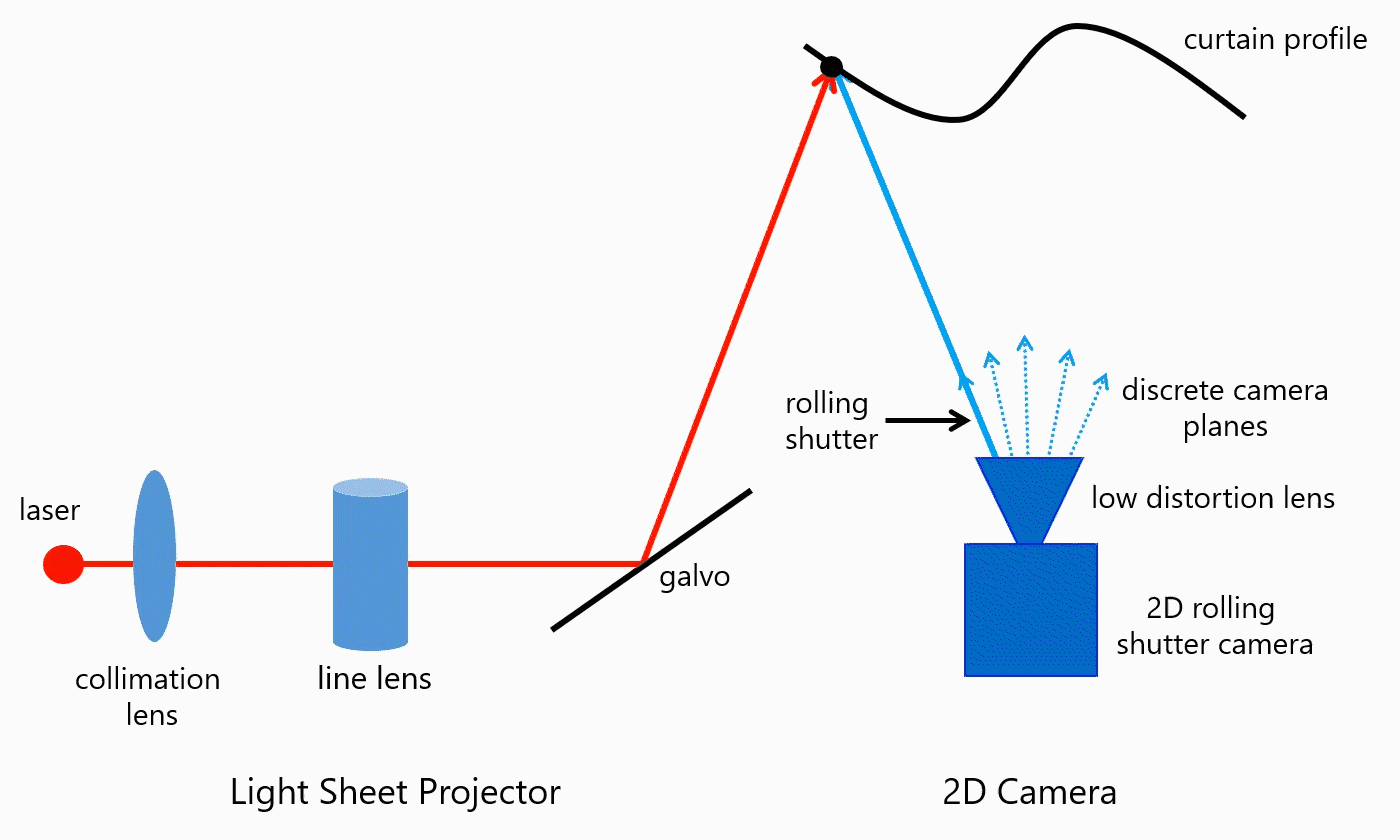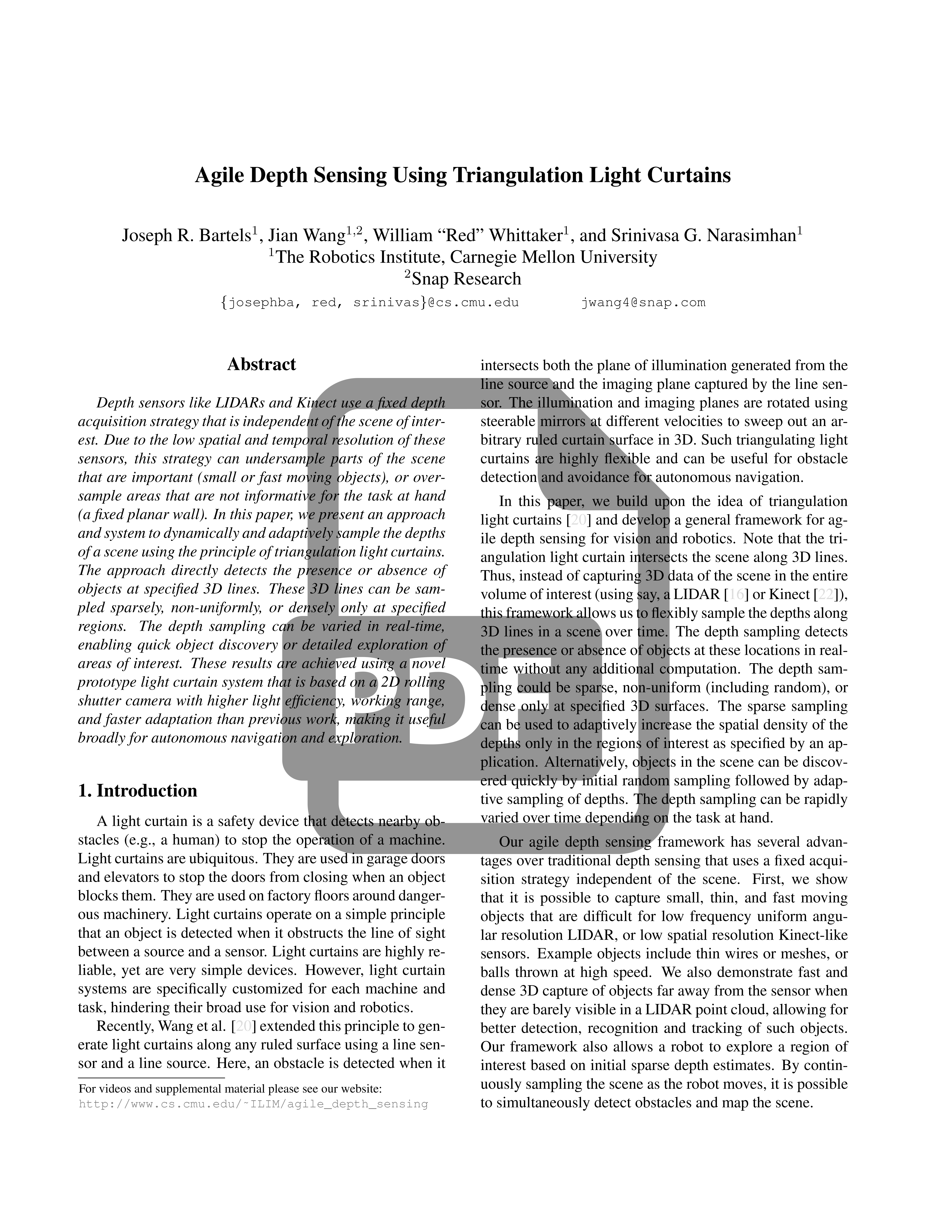High-Rate High-Resolution Depth Sensing
The rapid capture rate and resolution of our device enables the imaging of small and fast objects as they pass through the light curtains. the resolution of the light curtains provide much better detail over scanning LIDAR devices and can enable enhanced object recognition and critical detection of small objects (e.g. wires, branches, etc). This is especially noticeable when imaging thin structures or objects at a distance.
We demonstrated the high rate and resolution by capturing wiffle balls, ping ping balls, and a Frisbee that were thrown through a planar curtain 5m away. The light curtain detects all of the balls at a much higher resolution than LIDAR (white points).
Our techniques also work outdoors in bright light out to 20 meters (100klux). In the below video we capture a pedestrian and bicyclists as the pass through a planar curtain 15 meters away. The objects are unrecognizable in the LIDAR at this distance whereas we capture the objects at high-resolution as they pass through the curtain.
The resolution of our device enables the full capture of a fine details such as a mesh fence or wires (green points). LIDAR, once again undersamples these details and the objects are difficult to identify (white points).








 Joe Bartels
Joe Bartels
 Jian Wang
Jian Wang
 William "Red" Whittaker
William "Red" Whittaker
 Srinivasa Narasimhan
Srinivasa Narasimhan